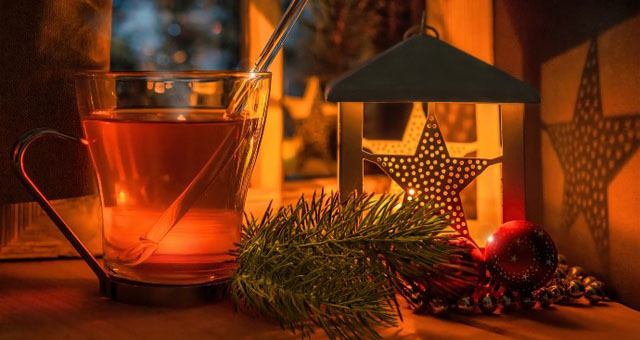
*** UPDATE ***
Winter Survival Food is now available! This full colour booklet shows you how to forage for wild edibles during the lean winter months, giving your body the nutrition it needs to survive.
****************
Many people are asking me now that it is winter what can a forager collect? In many areas across the northern hemisphere there is a blanket of snow now and things may appear bleak, but there is some goodness to be had out there. Whether you are a forager or a prepper, there’s a forest full of nutrition that can keep you alive if need be.
Pine Tea
Conifers (Pinus strobus and Pinus resinosa in particular) provide year round goodness that includes 136mg of vitamin C per one cup of pine needles. Pine needles also contain vitamins A, B1, B2, B3, calcium, iron, phosphorus, potassium, and sodium. If this isn’t enough, they also contain polyprenols, physterols and carotenoids and this makes pine tea a potent antioxidant health brew. The white pine (eastern and western) is so nutrient-rich it truly is a hard act to follow in the winter months for nutrients.
Spruce Tea
The most common spruce trees are the White Spruce (Picea glauca) and the Black Spruce (Picea mariana) and the needles, pitch, tips and twigs all can be used to make an herbal tea (and spruce beer too). This tea however should be avoided if you are pregnant. Spruce has vitamin C, beta carotene, starch, and sugars.
Balsam Fir Tea
Balsam fir needles and twigs make a tea and like most trees mentioned in this blog, can be dried and ground into flour. Making a paste with this and water is survival food that will keep you alive. Balsam fir has vitamins C, B1, B2, B3, calcium, iron, phosphorus, potassium, sodium, beta carotene, protein and fibre.
Birch Tea
Small twigs and bark from the birch tree makes a tea, although not exciting in flavour (rather bland), it does provide some nutrients. Vitamins B1, B2, calcium, iron, magnesium, manganese and zinc is found in most birch trees. They appear in higher quantities in the syrup (can be tapped like a maple tree in the spring). White birch trees also contain betulinol, glycosides, flavonoids, saponins, sesquiterpenes, and tannins.
Chaga grows on birch trees; this is the healing process of a damaged birch tree. Chaga is typically found on older birch trees and generally on the east or west side of the tree.
The birch tree also contains a natural sweetener called xylitol. Xylitol was discovered by the Finnish and they began processing the inner bark to make toothpastes and mouthwashes. This is the main sweetener found in natural gums purchased in health food stores worldwide. Some research indicates that xylitol kills bacteria and reduces cavities.
Beech Tree Tea
The American Beech tree (Fagus grandifolia) grows in many areas and the twigs can be used to make tea. I’ve not been able to confirm the nutrient content of this tree however extract of the Beech tree is known to promote cell health.
Tamarack Tea
Tamarack (Larix laricina) is a member of the pine family and it is the only coniferous tree that loses its pine needles in the autumn. The bark is generally used to make tea and is said to be best in the autumn after the needles have fallen off or in the spring. Small branches can be used as well. The Tamarack contains vitamin C.
Most trees also have medicinal qualities as well as nutrition. For example, the Tamarack is an anti-inflammatory, an astringent, disinfectant, diuretic, expectorant, immune stimulant, a laxative, and a tonic.
There are many other trees not mentioned here that hold a surprisingly high content of nutrition that can be enjoyed often or as survival food. For the forager, it makes life a little bit more challenging obtaining a harvest to bring home, but it can be done. This is reassuring news for the preppers as well knowing that trees not only can provide shelter and fire, they will nourish the body as well.




Thank you for such wonderful info. Appreciate it! Happy New Year!
This is truly amazing and thabnk-you! Are you doing any winter walks cause I know people who are interested.
It’s not winter in my side of the world, but your variety of winter tea is indeed very informative and interesting. Thanks, Karen. I’ve taken note.
Btw, will work on the bios come January, okay? All the best for 2013. x
And, loving the beautiful flowers in your header. Like dreamland…
You might want to add Sassafras Tea made from small twigs.
Hello,
I have recently taken part in a “Decolonizing Diet Project” in which 20 subjects consumed a portion of their diet as pre-colonial foods of the Great Lakes Region for one year.
I am a nutritionist by “degree,” and am writing a chapter for the cookbook being published of recipes developed by participants in the study. I am looking for documentation for the nutrient content of “teas” (thanks for the explanation of the term) made from wild plants, especially white pine, cedar, and wintergreen. Could you tell me where you found the data you quote?
Thanks! And well done.
Nancy Irish
[email protected]
P.S. You can check out the research project, conducted by a professor at Northern Michigan University, at
http://decolonizingdietproject.blogspot.com/2012/03/ddp-seeds-available-at-gathering.html?spref=fb
I would be interested to know weather or not grape vine could be made into tea?